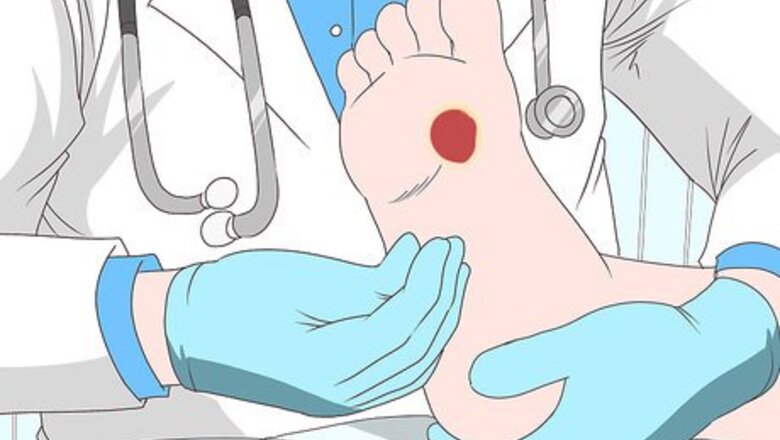
views
Seeing Your Doctor
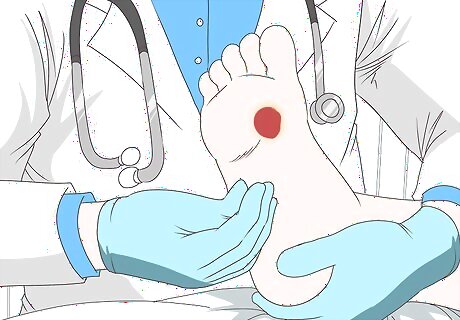
See your doctor early on if you have a sore, especially if you have diabetes. Ulcers can quickly become infected and lead to much worse problems, so see your doctor as soon as you can if you suspect you have an ulcer. The doctor can help you decide the best course of treatment moving forward to protect you from further complications! Your doctor will evaluate what type of ulcer you have, the depth of the ulcer, and whether there's an infection present, as well as the best way to treat it. If left unchecked, ulcers can lead to deep infections that reach to the bone. Check your feet regularly for ulcers and sores, using a mirror for the bottom of your feet if you need to.
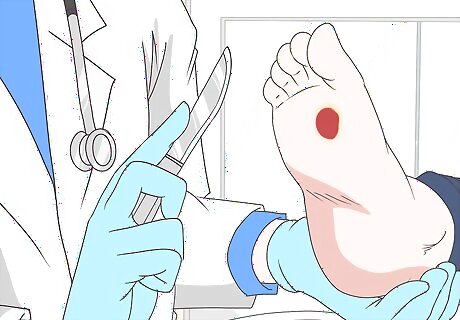
Expect your doctor to thoroughly clean the ulcer. The doctor must remove all excess dead tissue and drain any fluid. This can take a few minutes and may be painful. However, you definitely want the doctor to do it, as it will help the healing process! The doctor might apply topical fluids or use medical instruments to remove dead tissue. If the doctor has to go very deep with a scalpel, you'll be given a local anesthetic, so you shouldn't feel the pain. You may even be referred to a surgeon. If you're worried about the process, ask your doctor what will happen ahead of time. That way, you know exactly what to expect. Most doctors will talk you through each step and will work their hardest to minimize pain. Your doctor may also apply a graft or dressing to the ulcer to help prevent infection and encourage new skin growth.
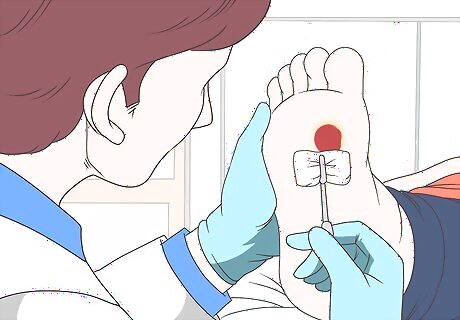
Ask if the doctor is going to culture an infected ulcer. Culturing the ulcer means testing the bacteria from the ulcer to see what kind it is. Then, the doctor can pick the antibiotic most appropriate for that bacteria, helping to speed up the healing process. Typically, culturing just requires taking a swab of the wound to gather bacteria. It shouldn't be painful, or if it is, it will only last a few seconds.

Discuss what antibiotic is appropriate if your ulcer is infected. If the ulcer is infected, your doctor will prescribe an antibiotic. You may receive oral antibiotics that you take several times a day, or your doctor may prescribe a topical antibiotic that you put on your ulcer. Sometimes, you may receive both types of antibiotics.
Caring for an Ulcer at Home
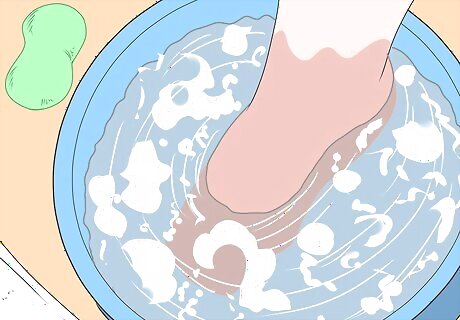
Bathe the ulcer and your feet with soap and lukewarm water daily. Use a mild soap and gently wash and rinse the area using your hand. Don't scrub the area, as that could make the ulcer worse. This process will help remove the dry skin from the area, as well as wash away any drainage from the area. Don't forget to gently wash between your toes as well.
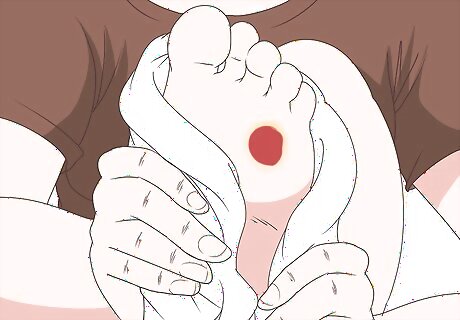
Pat the area dry with a clean paper towel. Don't rub your wound with the towel, as you'll only make the area worse. You can use a terrycloth towel, but they tend to hold on to bacteria even after washing, which is why a paper towel is better. Gently pat the area between your toes, too, to remove the moisture there.
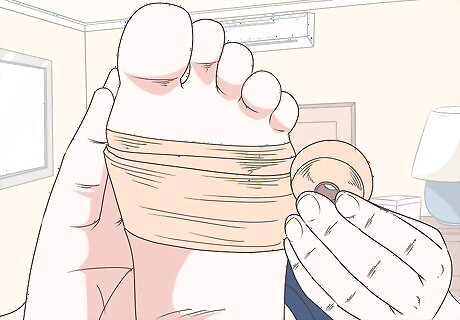
Apply a bandage to the ulcer after cleaning it. It's best to keep the wound moist and covered all the time, except when you're showering. Use an adhesive bandage if it will stay on. If not, use gauze and medical tape, which you can buy at a local drug store. Put any ointment you're using on the gauze, then place it over the wound. Use medical tape to hold it in place. Talk to your doctor about the best type of bandage and ointments to use, as it's different for different types of ulcers. In some cases, you may be advised to use an over-the-counter antibiotic ointment, while in other cases, you may be asked to use prescription ointments. You can find both dry bandages and bandages that increase moisture. Your doctor will tell you which bandage is right for you. You can also hold the gauze in place with the type of medical tape that only sticks to itself so you don't have adhesive on your skin. Wrap it around the whole foot so you can stick it to itself. Be sure to change your bandages daily or when they start to come off. Additionally, keep your bandages clean.
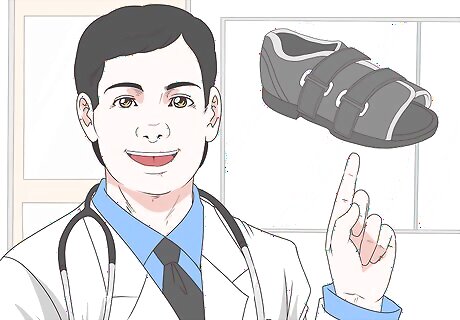
Take the weight off your ulcer with a surgical shoe. A cast, surgical shoe, or surgical boot helps relieve pressure on the ulcer, giving it a chance to heal. Plus, taking the weight off it will help with the pain. Your doctor will help you decide which one is the best for your situation. Your doctor may also recommend foam inserts for your shoes, which can also help take the weight off if your ulcer isn't too severe. Talk to them about the best options for you.
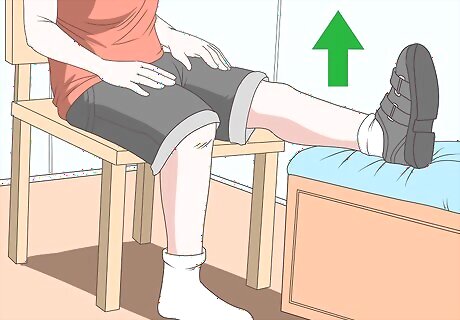
Stay off your feet as much as possible. While a cast or surgical shoe will help, you need to keep the weight off your feet as often as you can. The weight pressing on your ulcer can increase the infection's depth, making it worse. Sit down rather than standing whenever possible. Elevating your feet is even better. Prop them up on a pillow when you're in bed so that you take any pressure off the area. When you're sitting down, use a footstool to elevate your feet. In some cases, your doctor may ask you to use crutches to take the weight off your ulcer.
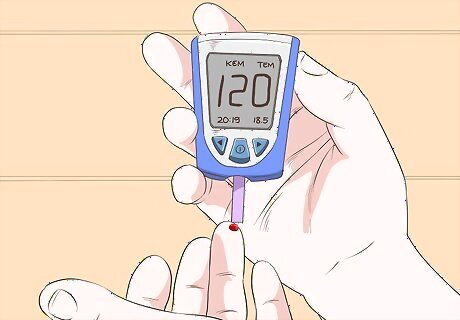
Control your blood sugar levels if you have diabetes. Elevated glucose levels make it more difficult for your body to heal an infection like an ulcer. Test your blood sugar as often as your doctor suggests and stay on a doctor- or nutritionist-recommended diet to lower your blood sugar levels. If you're staying on your diet and medication schedule and still having trouble controlling your blood sugar, talk to your doctor about changing up your medication or insulin to help better control your diabetes. Additionally, if you're overweight, losing a few pounds can help your wound heal more quickly.
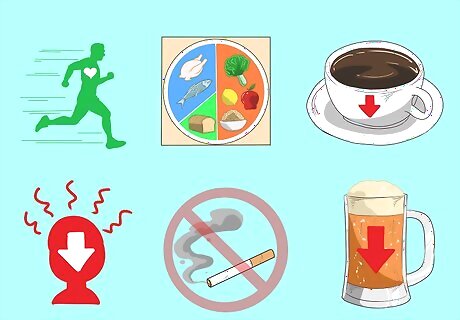
Keep your blood pressure under control. High blood pressure can cause foot ulcers, and it can make it harder for them to heal. Managing your blood pressure can help your sores heal faster, and it will reduce the risk of new sores forming. You can reduce your blood pressure by exercising at least 30 minutes a day, eating a healthy, balanced diet, eating 1,500 mg or less of sodium daily, consuming less caffeine, reducing stress, not smoking, and limiting alcohol to 1 drink a day for women or 2 drinks a day for men. If you have high blood pressure, make sure you're under the treatment of a doctor. Additionally, always take your medication as directed.

Ask your doctor if compression garments are appropriate. With some types of ulcers, compression garments such as socks or stockings can be helpful. However, not all types of ulcers benefit from this treatment, so it's important to talk to your doctor first before you use these garments. Compression garments minimize swelling in the area. You can find them at medical supply stores, drug stores, or online.
Using Other Medical Interventions
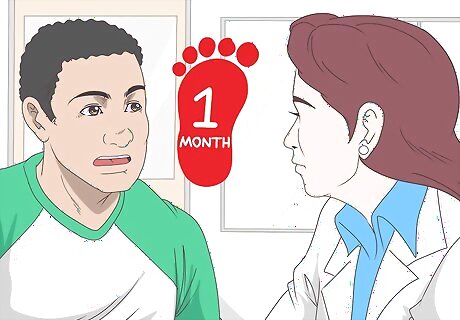
Go back to the doctor if your ulcer hasn't healed in a month. After following your doctor's care instructions, the ulcer should be significantly better in a month's time. If it's not or if it's worsened, you need to return to your doctor for further instructions. They may send you on to a specialist, such as a podiatrist. Your doctor may recommend a different antibiotic, or they may suggest different therapies.

Request x-rays and MRIs for a deep ulcer. If the infection is particularly bad, your doctor may recommend x-rays. The point of the x-ray is to see if the infection has entered the bone, which can cause more serious problems. MRIs may also be appropriate for the same reasons. During the x-ray, the technician will ask you to lie still so they can get a clear picture of your bones.
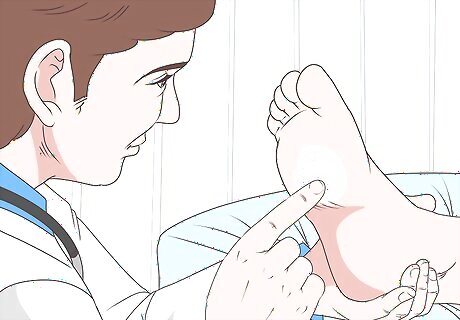
Discuss living cellular substitute to heal a stubborn ulcer. This therapy is a bandage layer composed of living cells, namely keratinocytes and fibroblasts. It provides proteins and growth hormones to the wound, ones your body is having trouble supplying. In this way, this layer promotes healing. The doctor will apply this layer to your skin, typically as a disk over your wound.

Ask about pure oxygen treatment to increase your body's healing properties. With this treatment, you're taken into a pressurized room. In that room, you'll breathe pure oxygen instead of the normal mixture of air. The treatment helps promote circulation, which in turn may assist with healing. Typically, you spend 1-2 hours in the room for several days in a row, depending on the severity of the ulcer. It's a painless treatment.




















Comments
0 comment